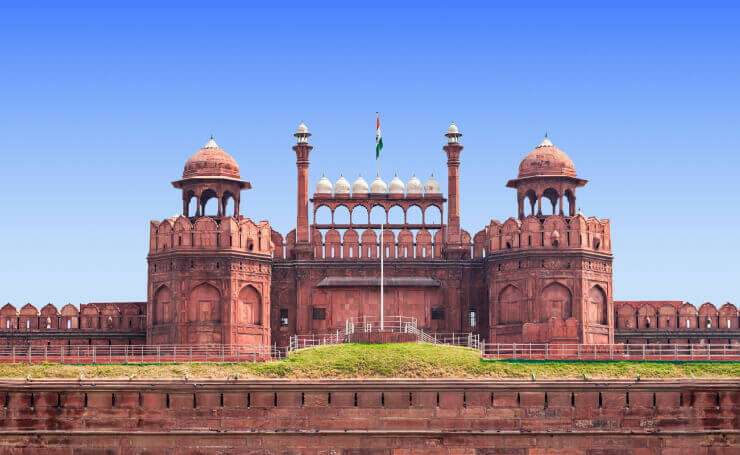The Red Fort, standing tall in the heart of Delhi, India, is a captivating monument that embodies the grandeur and power of the Mughal Empire. Clad in red sandstone, its imposing walls and intricate details whisper tales of a bygone era, making it a UNESCO World Heritage Site and a must-visit destination for any history buff or traveler.
Commissioned by Emperor Shah Jahan in 1638, the fort’s construction spanned over a decade, employing tens of thousands of skilled artisans and laborers. The fort served as the seat of Mughal power for nearly 200 years, witnessing the rise and fall of emperors, the blossoming of art and culture, and the shaping of Indian history.
Beyond its historical significance, the Red Fort is a marvel of Mughal architecture. The intricate blend of Persian, Timurid, and Hindu influences is evident in its design, showcasing arches, jali work, and exquisite floral motifs. Each structure within the fort complex, from the magnificent audience halls to the serene gardens, tells a story of opulence and artistry.
The Red Fort, standing tall in the heart of Delhi, India, is a captivating monument that embodies the grandeur and power of the Mughal Empire. Clad in red sandstone, its imposing walls and intricate details whisper tales of a bygone era, making it a UNESCO World Heritage Site and a must-visit destination for any history buff or traveler.

Commissioned by Emperor Shah Jahan in 1638, the fort’s construction spanned over a decade, employing tens of thousands of skilled artisans and laborers. The fort served as the seat of Mughal power for nearly 200 years, witnessing the rise and fall of emperors, the blossoming of art and culture, and the shaping of Indian history.
Beyond its historical significance, the Red Fort is a marvel of Mughal architecture. The intricate blend of Persian, Timurid, and Hindu influences is evident in its design, showcasing arches, jali work, and exquisite floral motifs. Each structure within the fort complex, from the magnificent audience halls to the serene gardens, tells a story of opulence and artistry.
Some of the notable structures within the Red Fort include:
- Lahori Gate: The main entrance to the fort, adorned with intricate carvings and inscriptions.
- Diwan-e- عام: The Hall of Public Audience, where the emperor addressed his court and subjects.
- Diwan-e- Khas: The Hall of Private Audience, used for meetings with dignitaries and close advisors.
- Mumtaz Mahal: The private quarters of the emperor and his wives, known for its stunning marble work and pietra dura inlay.
- Rang Mahal: The palace of colors, known for its vibrant decorations and beautiful gardens.
The Red Fort has not only been a witness to history but also a participant in its making. In 1857, it became a focal point of the Indian Rebellion against British rule, and on August 15, 1947, the Indian flag was hoisted for the first time at the fort, marking the nation’s independence.
Today, the Red Fort stands as a powerful symbol of India’s rich heritage and a reminder of the Mughal era’s architectural brilliance. It continues to captivate visitors with its grandeur, intricate details, and the stories it holds within its walls.







